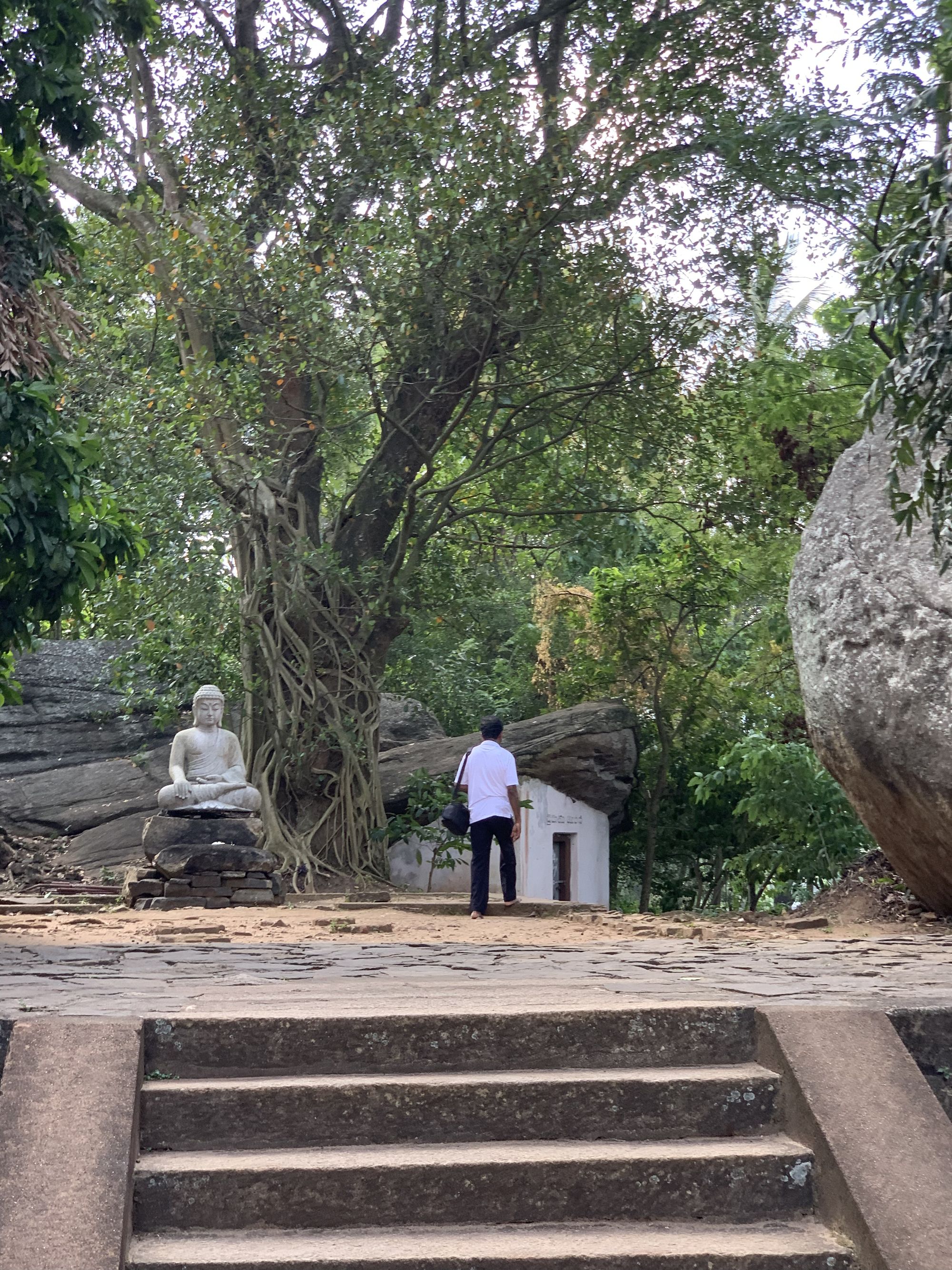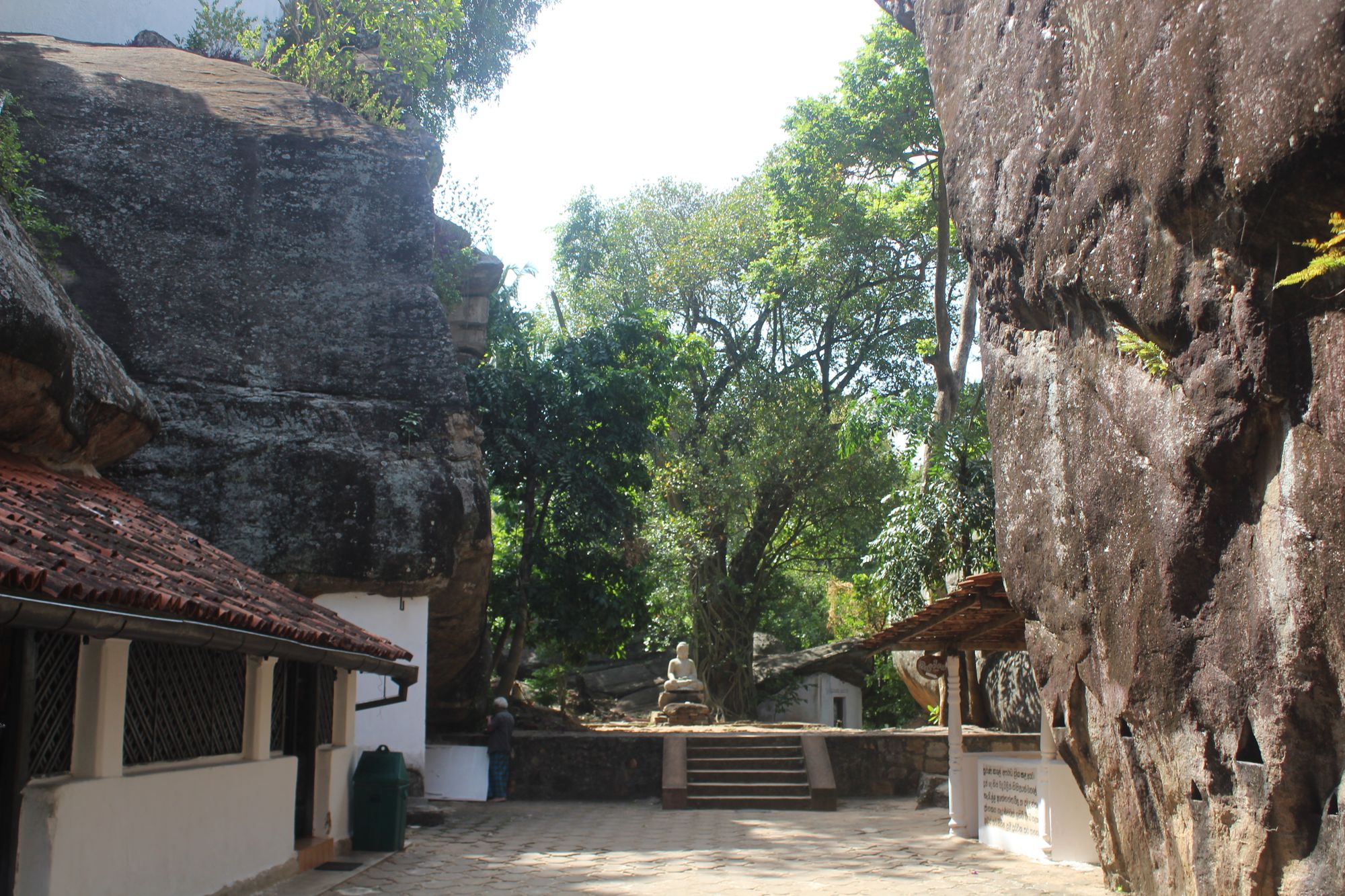
Aluviharaya Rock Temple
Sri Lanka is a land enriched with diverse cultural heritage and breathtaking landscapes. Home to many ancient Buddhist temples, the country offers a unique blend of history and spirituality. One such sacred site is the Matale Aluviharaya, a rock cave temple where one of the most important events in Buddhism took place.
Significance of Aluviharaya
Aluviharaya isn't merely an ancient temple but a cornerstone in Sri Lankan and Buddhist history. It was within the hallowed caves of Aluviharaya that the teachings of the Buddha were immortalized in written form. This was one of the most significant events in Buddhist history that forever altered the course of Buddhism.
History of Aluviharaya Rock Cave Temple
A Time of Crisis
During the reign of King Valagamba (also known as Vattagamini Abhaya), Sri Lanka was a stronghold of Buddhism. Still, it was also a faith that rested mainly on oral tradition.
The Buddhist scriptures, known as the Tripitaka, comprised the Vinaya Pitaka (discipline basket), Sutta Pitaka (discourse basket), and Abhidhamma Pitaka (higher teachings basket). Ever since the time of Lord Buddha, these sacred texts were memorized and recited by monks and passed from teachers to their students.
During this time, there was an invasion from South Indian rulers that forced King Valagamba into exile. The foreign rulers were not sympathetic to Buddhism and posed a real threat to the faith's existence within the island nation.
The island also experienced a severe drought and famine, which led to widespread suffering among the general population as well as monks. Many monks perished during this time from illness and starvation. The surviving monks realized that their deaths would also mean that the teachings of the Buddha would also be lost forever.
The Council of Matale Aluviharaya
Recognizing the need to preserve these valuable teachings for the future, the monks chose Aluviharaya as the site to preserve these teachings in written form.
After regaining his throne, the devout King Valagamba supported the Buddhist monks who had protected the religion during his exile. Under his patronage, 500 scholars gathered in the caves of Matale Aluviharaya, dedicating themselves to the monumental task of recording the Tripitaka.
The process was not just a simple act of writing. It was a very spiritual and intellectual task that required a deep understanding of the Pali language, the ability to translate and maintain the essence of the teachings, and a certain level of artistry.
The commitment of these 500 scholars resulted in the first-ever written version of the Tripitaka, ensuring that the sacred teaching would survive the test of time.
Global Impact
This historic event had a ripple effect that spread far beyond the small island of Sri Lanka. The transcription of the Tripitaka at Aluviharaya played a crucial role in Buddhism's spread to other parts of the world.
Preserving the Tripitaka in written form allowed the religion to maintain its purity as it expanded, thereby making Aluviharaya a significant point of origin for the faith of millions of Buddhists worldwide.
Features of Aluviharaya
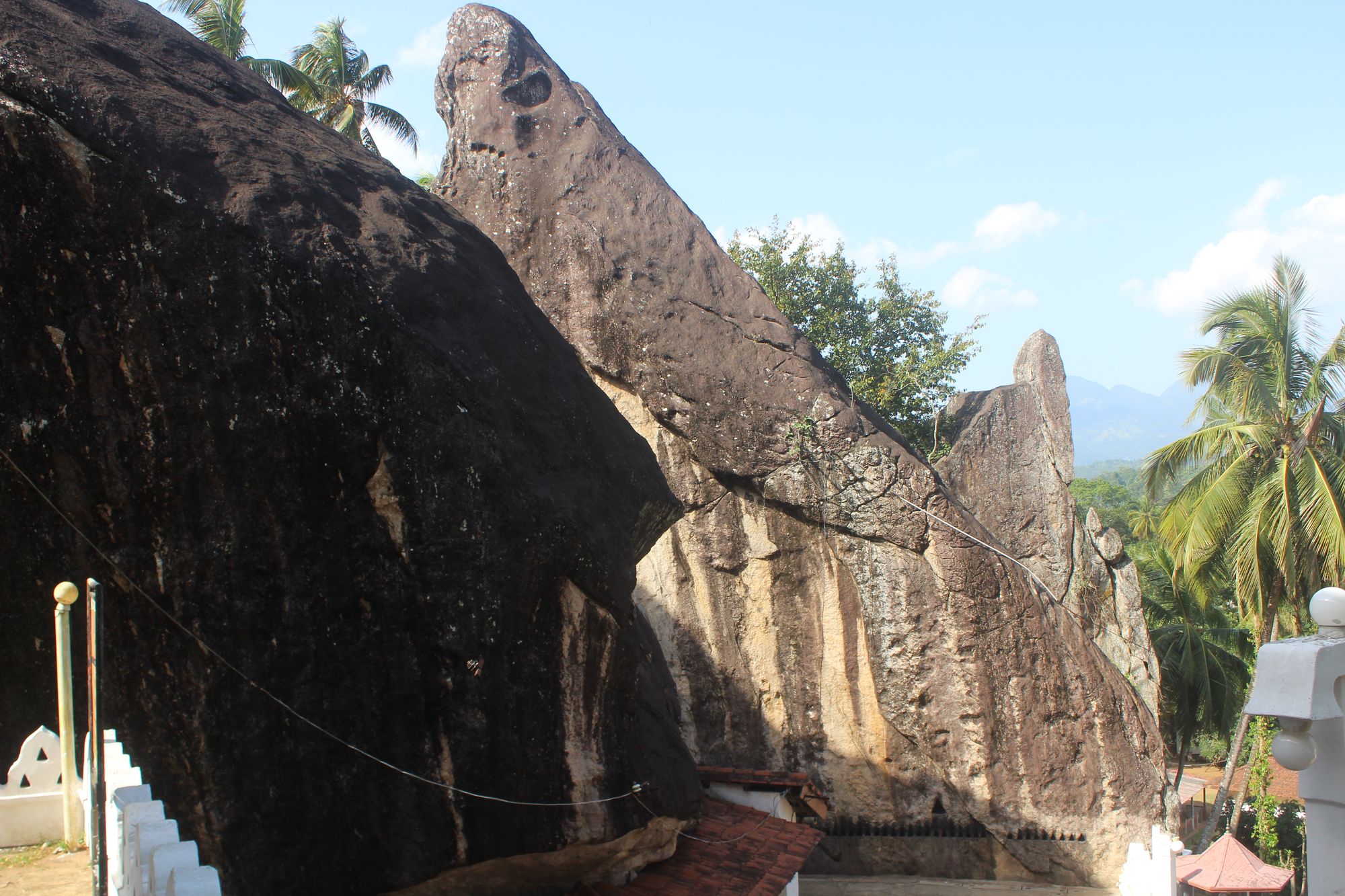
As you walk into the Aluviharaya complex, the first thing that captures your attention will be the massive rock walls towering by the entrance pathway. Once you make your way to the rock cave monasteries, you'll find a fascinating range of vivid murals that bring to life various aspects of Buddhist philosophy and tales from the Jataka stories, which describe the Buddha's past lives. These murals adorn the walls in rich colors, giving you an idea of the temple's history and significance.
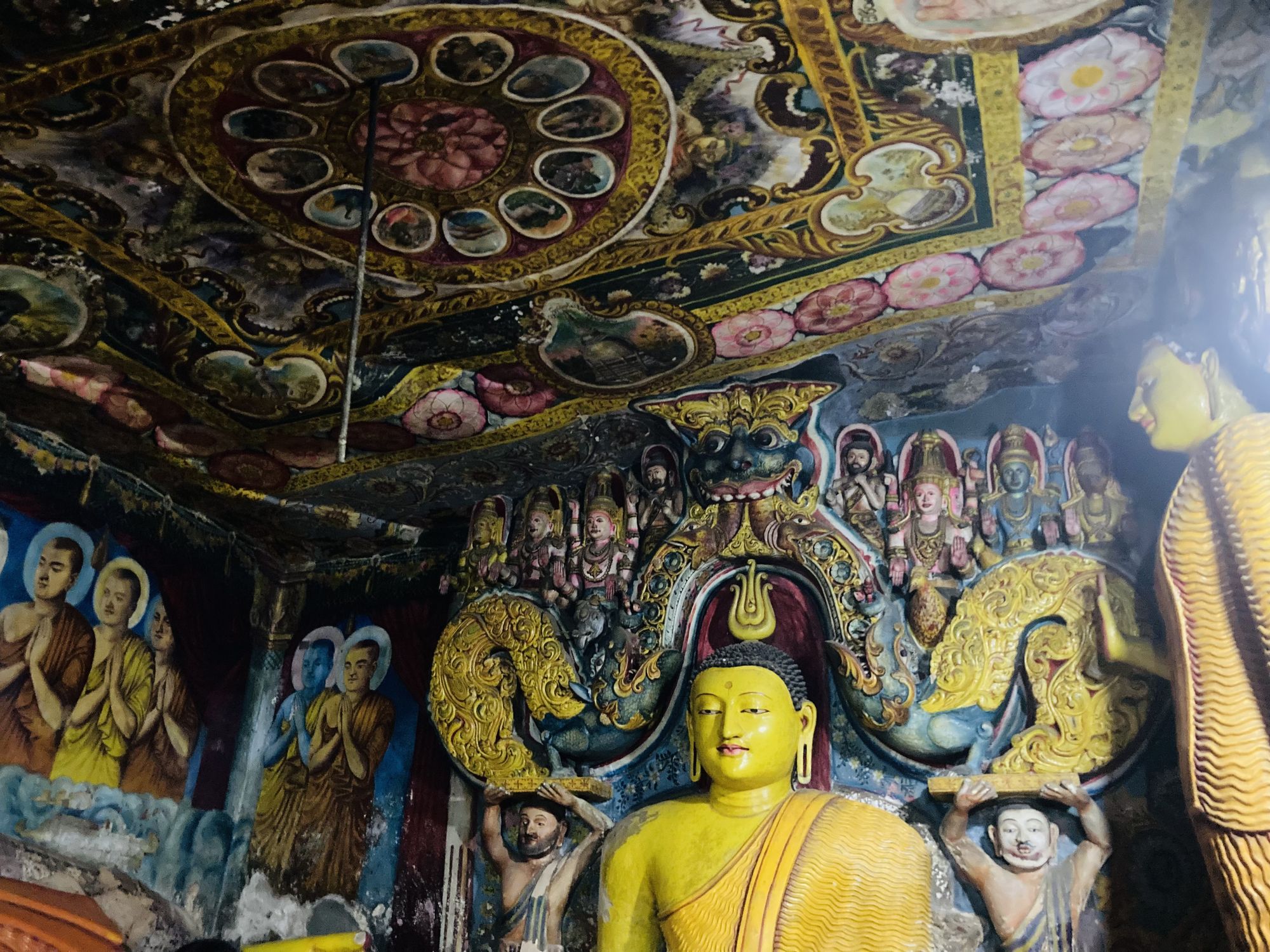
A series of Buddha statues in various postures—sitting, standing, and reclining—can be found throughout the caves. The most prominent statue is the massive reclining Buddha in the main cave. It is surrounded by detailed paintings that narrate the story of Siddhartha Gautama's journey to becoming the Buddha.
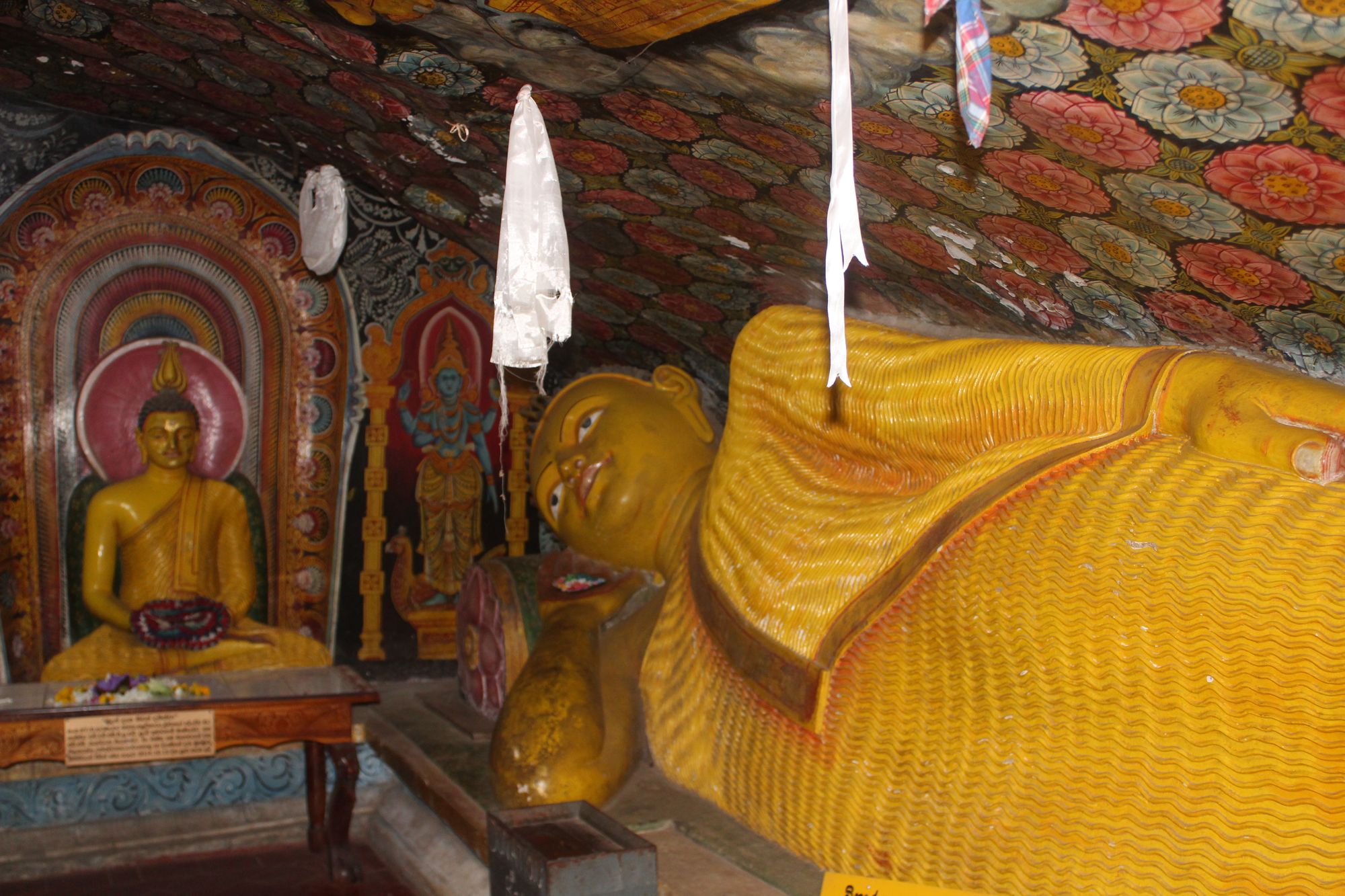
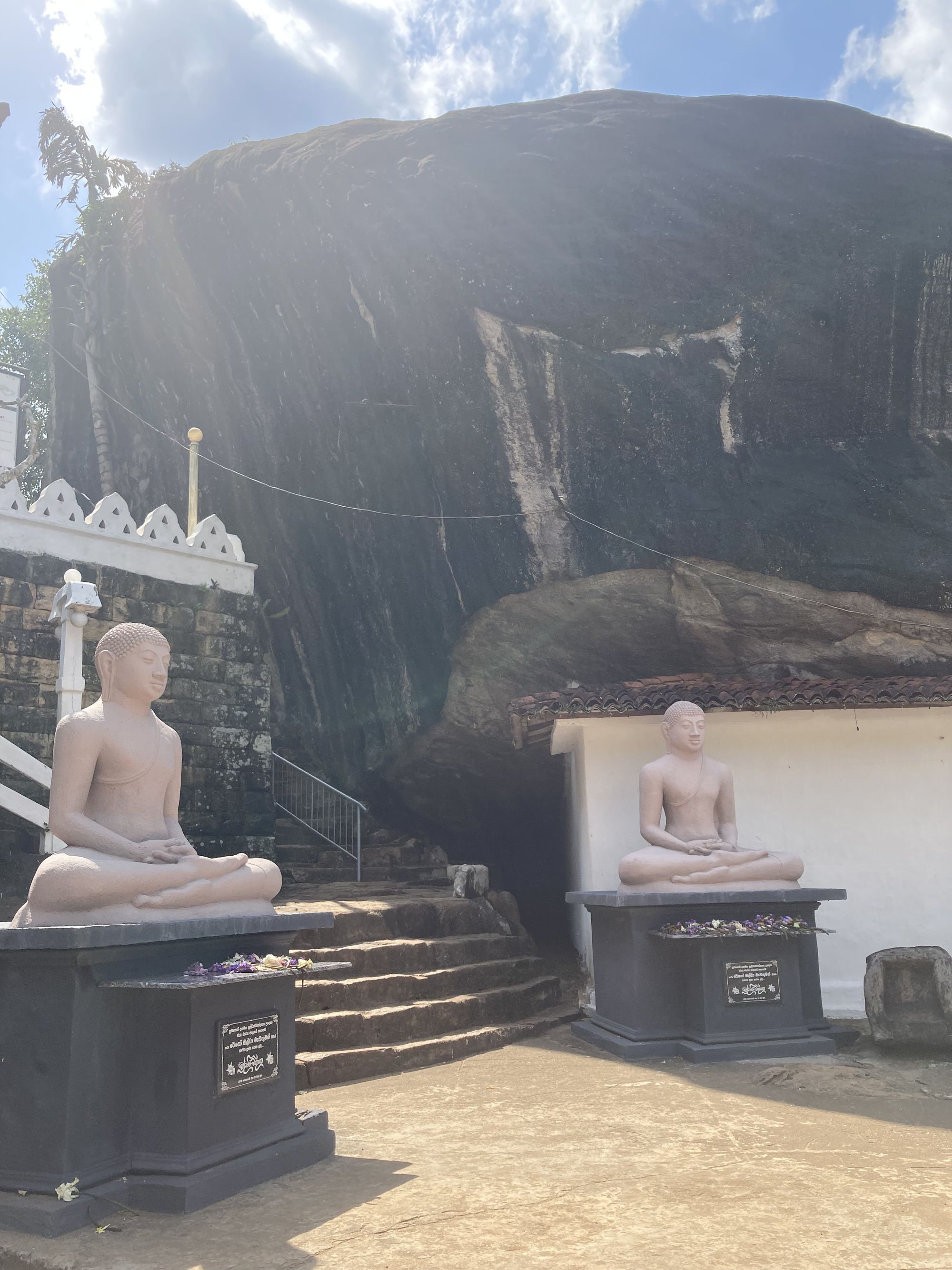
Beyond the statues and murals, several stupas or dagobas are situated within the temple grounds. These dome-like structures house sacred Buddhist relics and offer quiet corners for meditation and quiet reflection. Each stupa is unique in its design and provides a different perspective on architectural styles over the centuries.
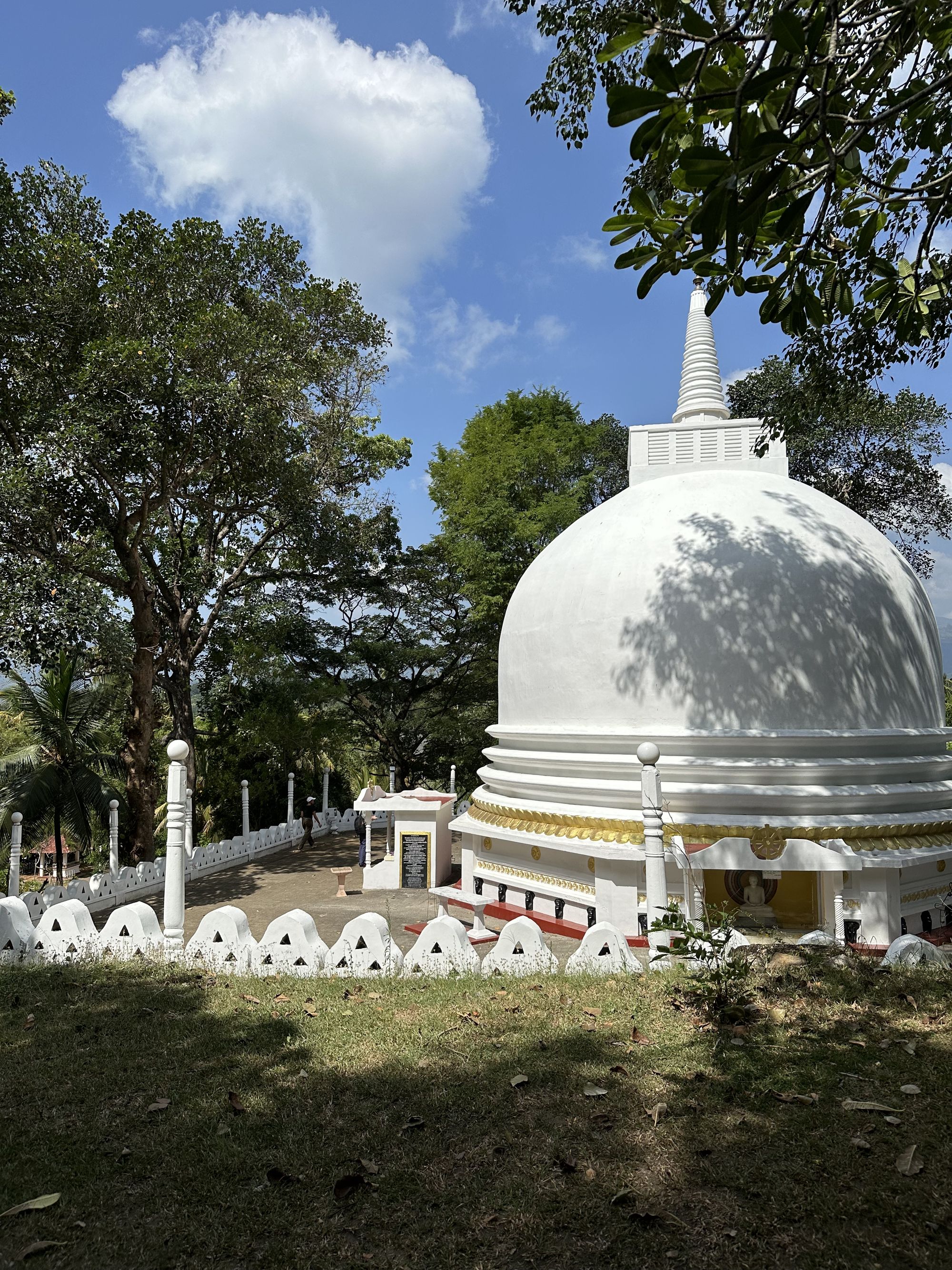
For those interested in the more academic side of Buddhism, the temple also houses a modest library and study area where ancient scriptures and modern texts on Buddhist philosophy are available for study.
You can also climb up to several stupas and other prominent areas within the temple. They offer places of worship as well as scenic views of Matale.
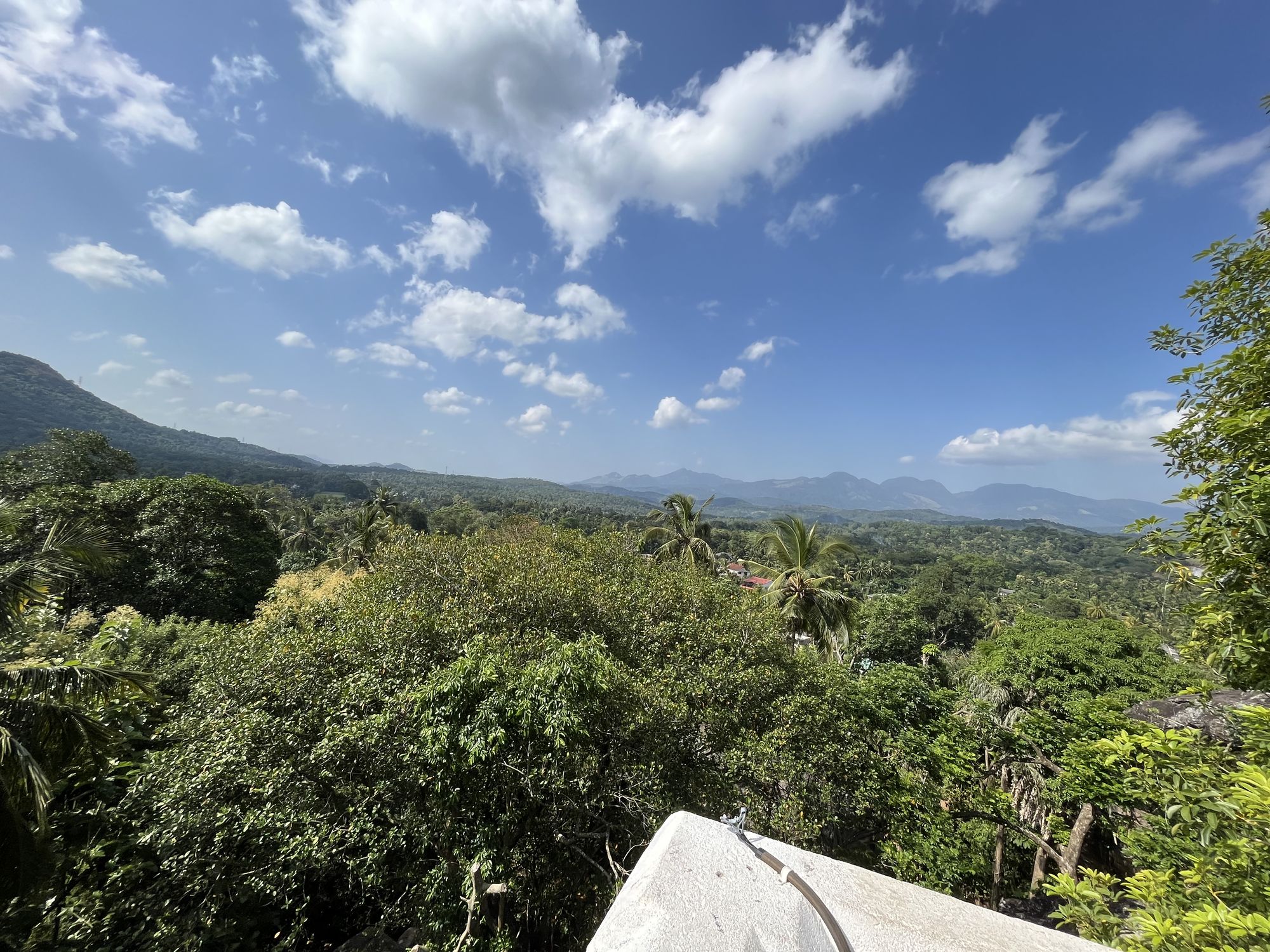
Cultural Importance
The Matale Aluviharaya is not just important for its historical event. It is a revered and worshipped site even today, and thousands of Buddhists visit this sacred site each year in search of spiritual enrichment.
The tranquility of the place offers a space for spiritual retreats, and it is a prominent site that teaches the younger generation about the importance of their heritage.
Best Time to Visit
The best time to visit Matale Aluviharaya is between December and April, when the weather is dry and pleasant. Early mornings or late afternoons are ideal to avoid the heat.
How to Get to There
Getting to Aluviharaya is fairly straightforward, especially if you're coming through Kandy. By car, the journey typically takes around 45 minutes to an hour on well-maintained roads.
Alternatively, regular bus services run from Kandy to the nearby city of Matale, where you can catch a local bus or a tuk-tuk to reach the temple. If you prefer train travel, take a train to Kandy and then use local bus or taxi services for the remainder of the journey to Matale.
Travel Tips and Advice
- Dress Code: Dressing modestly is not just a sign of respect but often a requirement in many religious sites in Sri Lanka, including Aluviharaya.
- Footwear: Remember to remove your shoes before entering the temple premises. You'll often find designated areas near the entrance where you can safely leave your shoes.
- Photography: While taking photos for personal memories is generally allowed, always look for signs indicating photography restrictions, especially in areas housing sacred artifacts.
- Donations: You'll find donation boxes around the temple. While not mandatory, a small donation is a way to contribute to the temple's upkeep and show appreciation for your visit.
- Guided Tours: If you're interested in learning more about the temple's rich history, consider hiring a local guide. They can offer invaluable insights that you may not get from just exploring on your own.
- Local Customs: If you see locals engaged in religious rituals, give them space and maintain a respectful silence. This is not only polite but also enhances your own experience by immersing you in the spiritual atmosphere.
Nearby Attractions
While the Aluviharaya rock cave temple alone is worth the trip, the Matale district and its vicinity offer a whole range of attractions and experiences.
- Serugala Buddha Statue: Just a short walk from the Aluviharaya temple, this magnificent golden Buddha statue rests atop a massive rock in a nearby mountain. Once you climb to the top, you'll get to admire the beautiful detailing of the statue as well as the scenic views of the surroundings.
- Knuckles Mountain Range: For the adventurous, the Knuckles Mountain Range offers various outdoor activities, including hiking, bird-watching, and camping. The range is named after its resemblance to a clenched fist and offers some of the most spectacular views in Sri Lanka.
- Riverston: Situated within the Knuckles Mountain Range, Riverston offers one of the best trekking experiences in Sri Lanka. The area is noted for its magical scenery, misty mountains, and rich biodiversity, making it a paradise for nature lovers.
- Sera Ella Waterfall: A scenic waterfall near the Knuckles Mountain Range, Sera Ella is renowned for its serene beauty. The waterfall is most impressive in the rainy season and is a cool, tranquil place to relax.
- Nalanda Gedige: An ancient complete stone temple near Matale, Nalanda Gedige is an archeological mystery, blending Hindu and Buddhist architectural features. It's a small but intriguing site, often overlooked by tourists.
- Kandy City: Just an hour's drive from Matale, Kandy is a must-visit for anyone interested in Sri Lankan culture. The city is home to the famous Temple of the Tooth. It hosts the annual Esala Perahera, one of Asia's most celebrated festivals.
Matale Aluviharaya is a monument that continues to educate, inspire, and offer solace. Its cultural, historical, and spiritual importance make it a great destination on any journey through Sri Lanka. It's a pilgrimage to the soul of a nation, and it's waiting for you to discover its riches. So visit this amazing place and let the echoes of centuries-old chants guide you through your own spiritual exploration.
